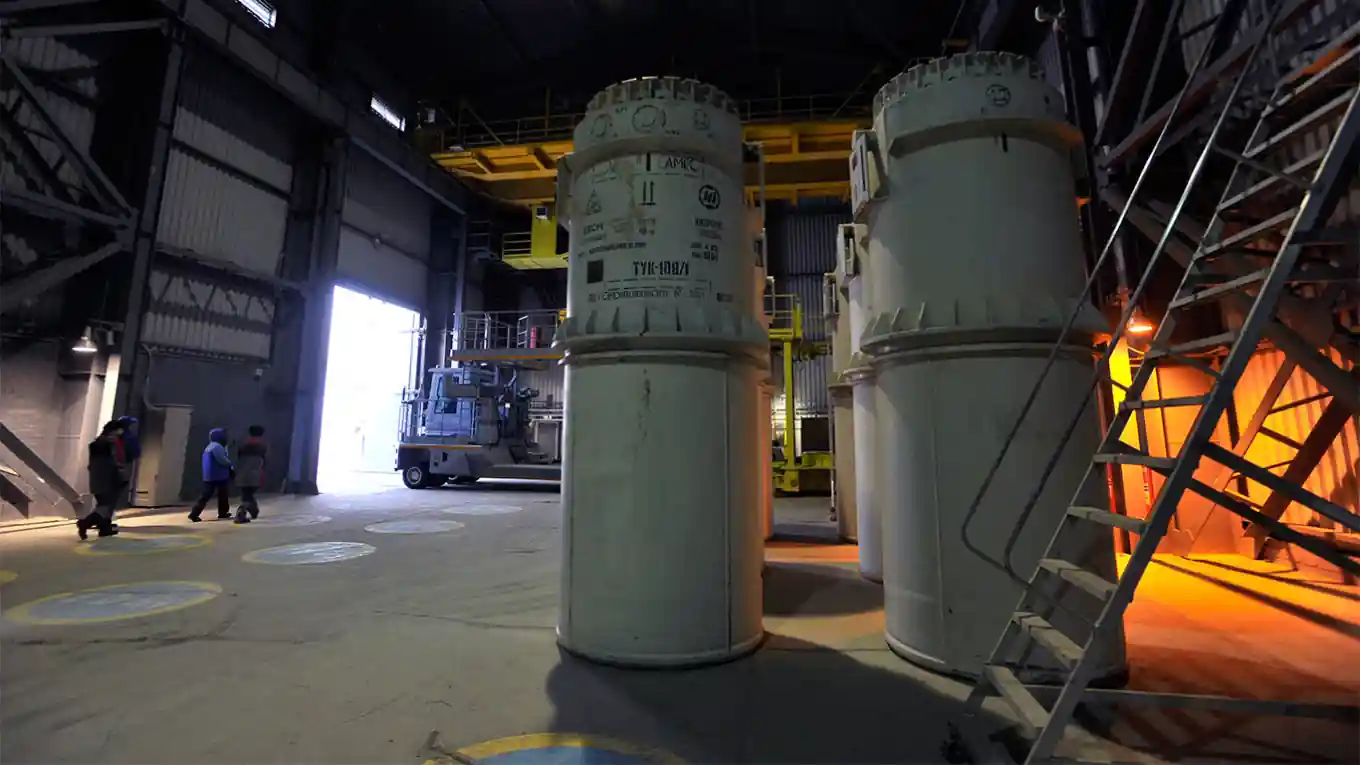In the wake of the ongoing invasion of Ukraine, the Russian Arctic remains a hazardous legacy of the Soviet Union’s nuclear past.
Far from the immediate conflict zones, this region is home to a multitude of radioactive threats that pose a significant danger to the environment and public health.
The cessation of international cooperation in nuclear decontamination efforts has exacerbated the situation, leaving the Arctic as one of the most contaminated areas on the planet.
Following the fall of the Soviet Union, a concerted effort by Western governments aimed to address the vast quantities of radioactive waste left behind by the Soviet nuclear submarine fleet.
Throughout the late 1990s and early 2000s, these collaborative efforts led to the safe dismantling of 198 derelict submarines, which were still loaded with spent uranium fuel.
These initiatives were supported through bilateral funding agreements and scientific exchanges with European countries, showcasing a rare moment of international unity in addressing a common environmental threat.
However, the cooperation that once flourished has come to a standstill since February 2022, when Russian tanks rolled into Ukraine.
The Kremlin, asserting its ability to manage the nuclear cleanup independently, has shown little interest or financial commitment to continue these critical efforts.
As revealed in a recent report by Bellona, an international environmental organization, the Russian government’s wartime priorities have overshadowed the pressing need for nuclear decontamination.
One of the most alarming sites is Andreyeva Bay, a former submarine maintenance yard located northwest of Murmansk, near the Norwegian border.
This facility, which served as a refueling point for Soviet submarines, accumulated approximately 22,000 spent nuclear fuel assemblies from over 100 submarines.
Much of this hazardous material was stored in dilapidated containers exposed to the elements, leading to a significant environmental disaster in 1982 when 600,000 metric tons of radioactive water leaked into the Barents Sea.
Considering the site’s history and current condition, the cessation of cleanup efforts at Andreyeva Bay is particularly concerning.
Despite the substantial progress made in previous decades, the lingering radioactive waste continues to pose a severe risk to the region’s fragile Arctic ecosystem.
The interruption of international assistance has left Russia with the daunting task of managing this toxic legacy on its own, a challenge it appears ill-equipped to handle under the strain of ongoing military conflicts.
Neglecting these radioactive threats has profound environmental and public health implications. The contamination of the Barents Sea and surrounding areas has the potential to affect local communities, wildlife, and the broader Arctic environment for generations to come.
The international community’s withdrawal from cooperative cleanup efforts not only undermines decades of progress but also highlights the complex interplay between geopolitical conflicts and environmental stewardship.
As the war in Ukraine continues, the situation in the Russian Arctic serves as a stark reminder of the enduring consequences of neglecting nuclear waste management.
The radioactive threats lurking in this remote region demand urgent attention and a recommitment to international collaboration.
Without a renewed focus on decontamination, the legacy of the Soviet nuclear submarine fleet will continue to cast a long, dangerous shadow over the Arctic and beyond.
This article was created using automation technology and was thoroughly edited and fact-checked by one of our editorial staff members
